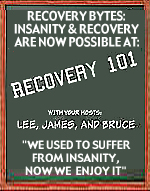
|
|
ETHNOCRATS
| SLAVERY'S INCONVENIENT FACTS By ROGER D. McGRATH
|
|
I learned firsthand how disturbing facts could be when teaching a U.S. history course at UCLA in 1987. One of my teaching assistants, a politically correct young woman, became terribly upset after listening to my lecture on slavery. "He shouldn't be saying such things!" she exclaimed to another teaching assistant. When asked by the other T. A. if she could challenge any of my facts, she exploded, "There are some facts that students just shouldn't know." Facts do have a rather inconvenient way of interfering with political correctness and with the imposition of theoretical models over the historical record. For a generation, at least, there has been a concerted effort to leave inconvenient facts out of the classroom. Discussions of slavery are particularly notorious. When I reintroduce a few of the facts that were once common to many college lectures, more than a few students look at me incredulously, as if I had invented the material. They can hardly be blamed. The material is new to them, and it wreaks havoc with the politically correct dogma they have been fed. Now that the issue of of reparations has been raised, it becomes even more important for the politically correct to suppress facts. The reparationists claim that the United States must compensate the descendants of slaves for 400 years of slavery. Since the United States was not established until 1788 (when the required three-fourths majority of the states approved the Constitution), slavery existed for only 77 years before the 13th Amendment abolished it. Add five years to include the government under the Articles of Confederation, and another seven if we go back to the Declaration of Independence. Before then, the reparationists have to look to Great Britain. More importantly, thought, Britain and other European powers did not enslave black Africans. Europeans (and later, Americans), acting privately (although sometimes with government charters), simply traded barrels of rum and other items to tribal chiefs for already enslaved Africans and then relocated the slaves to the Americas. Thus, the reparationists should be concentrating their efforts on the tribes that dominated equatorial West Africa. The white slave-traders who came to the shores of Africa were responsible for buying slaves and helping to perpetuate the evil institution, but not for enslaving the tribe that had lost a war or the man who had fallen into debt or the child sold by his family. The U.S. government had nothing to do with any of this. In the American colonies, the first Africans arrived as indentured servants, not as slaves, because slavery not legally recognized. Legal status was inspired by Anthony Johnson, a former African slave and colonial indentured servant who had been granted land in Virginia and had acquired several indentured servants himself. One of his servants, John Castor, an African who had been sold in the colonies, sued for his freedom, claiming that he had served his years of indenture. Johnson fought back, arguing that Castor had never entered into a contract of indenture, as Europeans had, but had been bought in Africa as a slave. In 1654, the Virginia high court decided in Johnson's favor, declaring that Castor was a "servant for life." This precendent-setting case was cited in other Southern colonies, and slavery, under whatever name, became firmly entrenched. Anthony Johnson, a black man, should properly be called the Father of American Slavery. Black Americans continued to hold slaves through the Civil War. In 1860, some 3,000 blacks owned nearly 20,000 black slaves. In South Carolina alone, more than 10,000 blacks were owned by black slaveholders. Born a slave in 1790, William Ellison owned 63 slaves by 1860, making him one of Charleston's leading slaveholders. In the 1850 census for Charleston City, the port of Charleston, there were 68 black men 123 black women who owned slaves. In Louisiana's St. Landry Parish, according to the 1860 census, black planter Auguste Donatto owned 70 slaves and farmed 500 acres of cotton fields. Black slaveholders were the exception to the rule, but so, too, were white ones. Only a small minority of Southern whites owned slaves, little more than five percent of the white population if calculated by individual owner, or some 20 to 25 percent if all the members of the slaveholders' families are included. This means that 75 percent or more of Southerners neither owned slaves themselves nor were members of families who did. When U.S. participation in the slave trade was ended in 1808 (as required by the Constitution) and cotton became an important crop, slaves became very valuable. A good fieldhand might go for $2,000 (some $150,000 in today's inflated currency). This meant that the most severe and dangerous work was left to hired white laborers, usually immigrant Irish. Frederick Law Olmstead, the architect of New York's Central Park, traveled throughout the South on the eve of the Civil War and was surprised to find, again and again, that Irishmen were used instead of slaves for the work of preparing swampland, felling trees, digging ditches, quarrying rock, and clearing forests because "it was much better to have Irish do it, who cost nothing to the planter if they died, than to use up good field-hands in such severe employment." At a landing on the Alamaba River, Irish deckhands were employed in catching and stowing cotton on ships after the heavy bales had come hurtling down a long chute from a towering bluff. When asked why slaves were not used to do the job, the ship's captain replied, "The niggers are worth too much to be risked here; if the Paddies are knocked overboard, or get their backs broke, nobody loses anything!" The death rate among the Irish laborers was shocking. The construction of the new Basin Canal in Louisiana alone cost the lives of more than 10,000 Irishmen. They were buried where they fell, in mass graves. Throughout the South in the antebellum era, black slaves were better fed, clothed, and housed, worked shorter hours, and lived longer lives than immigrant Irish laborers. Inconvenient facts, one and all. |
|
|
©
Copyright 1993-2013 PIG - The Politically Incorrect Gazette
|
|
|
|
||||||||||||||
|
||||||||||||||
• • • • • • • • • • • • • • • • • • |
||||||||||||||
 |
||||||||||||||
• • • • • • • • • • • • • • • • • • |
||||||||||||||
|
||||||||||||||
• • • • • • • • • • • • • • • • • • |
||||||||||||||
 |
||||||||||||||
• • • • • • • • • • • • • • • • • • |
||||||||||||||
 |
||||||||||||||
• • • • • • • • • • • • • • • • • • |
||||||||||||||
|
|||||||||||||||||||||||||||||||||
|
|
|
|




